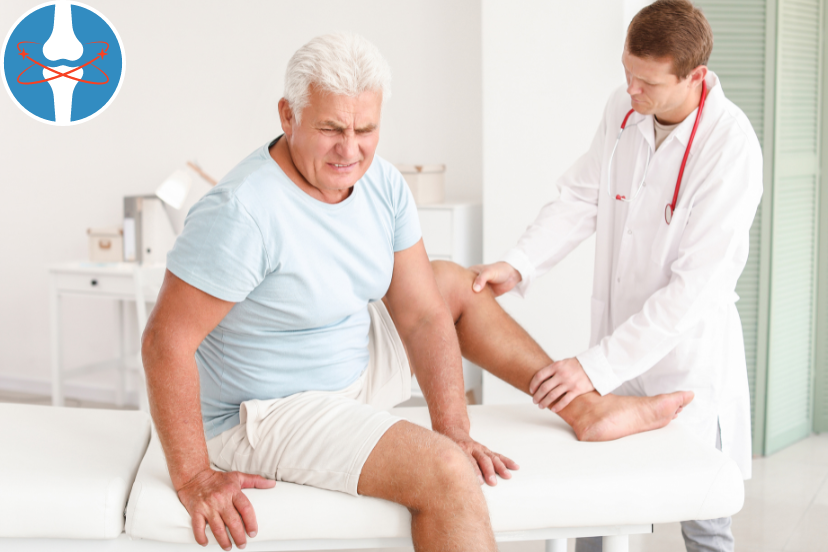Can Sciatica Cause Joint Pain
Can sciatica cause joint pain? Explore the symptoms, treatments, preventive measures, and effective relief strategies. Get answers now! Sciatica is a condition that affects millions of individuals worldwide, characterized by pain that radiates along the path of the sciatic nerve, which branches from your lower back through your hips and buttocks and down each leg. This pain typically affects only one side of your body and can range from mild to severe. Sciatica is often caused by compression or irritation of the sciatic nerve, commonly due to a herniated disk, bone spur on the spine, or spinal stenosis.
Understanding Joint Pain
Joint pain, on the other hand, refers to discomfort, soreness, or achiness in any of the body’s joints. It can be caused by a variety of factors, including injury, arthritis, or inflammation. Common joint pain conditions include osteoarthritis, rheumatoid arthritis, gout, bursitis, and tendonitis. Joint pain can affect any part of the body where bones come together to form a joint, including the knees, hips, shoulders, and wrists.
Sciatica or Joint Pain?
Can Sciatica Cause Joint Pain?
The question of whether sciatica can cause joint pain is one that often arises among individuals experiencing symptoms of both conditions. While sciatica primarily affects the nerves, it can indirectly lead to joint pain due to the way it affects movement and posture. Sciatica pain can cause individuals to alter their gait and posture to alleviate discomfort, which may result in increased strain on the joints. Additionally, chronic pain from sciatica can lead to muscle imbalances and weakness, further exacerbating joint issues.
Identifying Joint Pain Associated with Sciatica
Recognizing joint pain associated with sciatica can be challenging, as the symptoms may overlap with those of sciatica itself. However, some common signs include stiffness, swelling, and reduced range of motion in the affected joints. Individuals with sciatica may also experience pain that worsens with movement or weight-bearing activities, such as walking or standing. It’s essential to consult with a healthcare professional for a proper diagnosis and to rule out other potential causes of joint pain.
Treatment Options
When it comes to managing sciatica and joint pain, there are various treatment options available. Conservative measures such as rest, hot or cold therapy, and over-the-counter pain medications can help alleviate symptoms. Physical therapy is often recommended to strengthen the muscles surrounding the affected joints and improve flexibility and mobility. In some cases, corticosteroid injections may be administered to reduce inflammation and provide temporary relief. For severe or persistent cases, surgery may be necessary to alleviate pressure on the sciatic nerve or address underlying spinal issues.
Preventive Measures
Preventing sciatica-related joint pain involves adopting healthy lifestyle habits and practices that promote spinal health and reduce inflammation. This includes maintaining proper posture, engaging in regular exercise, and avoiding activities that exacerbate symptoms. Strengthening the core muscles can also help support the spine and reduce the risk of sciatica and joint pain. Additionally, maintaining a healthy weight can reduce stress on the joints and decrease the likelihood of developing musculoskeletal issues.
The Importance of Seeking Professional Help
While self-care measures can provide temporary relief, it’s crucial to seek professional help if you’re experiencing persistent or worsening symptoms of sciatica and joint pain. A healthcare provider can offer a proper diagnosis and recommend appropriate treatment options tailored to your specific needs. They may also suggest lifestyle modifications or refer you to specialists such as physical therapists or orthopedic surgeons for further evaluation and management.
Living with Sciatica and Joint Pain
Living with sciatica and joint pain can be challenging, but with the right support and management strategies, it’s possible to improve your quality of life. This may involve making adjustments to your daily routine, seeking emotional support from friends and family, and staying proactive in managing your symptoms. Engaging in regular low-impact exercises such as swimming, tai chi or yoga can help improve flexibility and strengthen the muscles supporting the spine and joints. It’s essential to listen to your body and avoid activities that aggravate your symptoms while focusing on activities that promote healing and overall well-being.
Frequently Asked Questions (FAQs)
Can sciatica lead to permanent joint damage?
While sciatica itself does not directly cause joint damage, prolonged untreated symptoms can lead to changes in posture and movement patterns, which may increase the risk of joint issues over time.
Is surgery the only option for treating sciatica-related joint pain?
Surgery is often considered a last resort for treating severe cases of sciatica and joint pain. Many individuals find relief through conservative measures such as physical therapy, medications, natural blend and lifestyle modifications.
Can sciatica and joint pain affect mobility?
Yes, severe sciatica and joint pain can significantly impact mobility, making it difficult to perform daily activities. However, with proper treatment and management, mobility can be improved.
Are there any exercises that can help alleviate sciatica-related joint pain?
Yes, certain exercises, such as gentle stretching and low-impact activities like swimming or yoga, can help improve flexibility and reduce pain associated with sciatica and joint issues.
How long does it take to recover from sciatica-related joint pain?
Recovery time can vary depending on the severity of symptoms and the effectiveness of treatment. Some individuals may experience relief within a few weeks, while others may require more extended periods of rehabilitation. It’s essential to follow a comprehensive treatment plan and stay consistent with self-care practices to facilitate recovery.
Extra FAQs Related to Can Sciatica Cause Joint Pain
Can sciatica cause hip and knee pain?
Yes, it can cause hip and knee pain due to its impact on the sciatic nerve, which runs from the lower back through the hips and down the legs. Irritation or compression of this nerve can lead to radiating pain that may affect the hip and extend to the knee.
What joints are involved in sciatica?
Sciatica primarily affects the lower back, hips, and buttocks, as well as the legs. While it doesn’t directly involve joints, it can indirectly impact the hip joint due to its proximity to the sciatic nerve. Other joints aren’t typically involved in sciatica.
Can sciatica cause pain all over the body?
Sciatica typically causes pain that radiates from the lower back through the buttocks and down one leg. While it can lead to discomfort in the leg, foot, or toes, it does not typically cause pain all over the body. However, severe cases may cause widespread discomfort due to muscle tension or secondary effects on posture.
Can sciatica cause calf pain?
Yes, sciatica can lead to calf pain. The sciatic nerve extends down the leg, and irritation or compression of this nerve can result in radiating pain, numbness, or tingling sensations that may be felt in the calf.
How do I know if I have sciatica or arthritis?
Differentiating between sciatica and arthritis involves recognizing specific symptoms. Sciatica typically presents with radiating pain along the sciatic nerve, often accompanied by numbness or tingling in the leg. Arthritis, on the other hand, causes joint pain, stiffness, and swelling, often worsening with movement. Consulting a healthcare professional for an accurate diagnosis is essential.
Can Sciatica Cause Joint Pain – Conclusion
In conclusion, while sciatica primarily affects the nerves, it can indirectly lead to joint pain due to its impact on movement and posture. By understanding the relationship between sciatica and joint pain and adopting appropriate treatment and preventive measures, individuals can effectively manage their symptoms and improve their overall well-being. If you’re experiencing persistent or severe sciatica and joint pain, it’s essential to seek professional help for a proper diagnosis and personalized treatment plan.
Disclaimer
Please note that the information provided in this article is for informational purposes only and should not replace professional medical advice. If you’re experiencing sciatica pain or any health concerns, it’s advisable to consult a healthcare professional for proper diagnosis and treatment.






